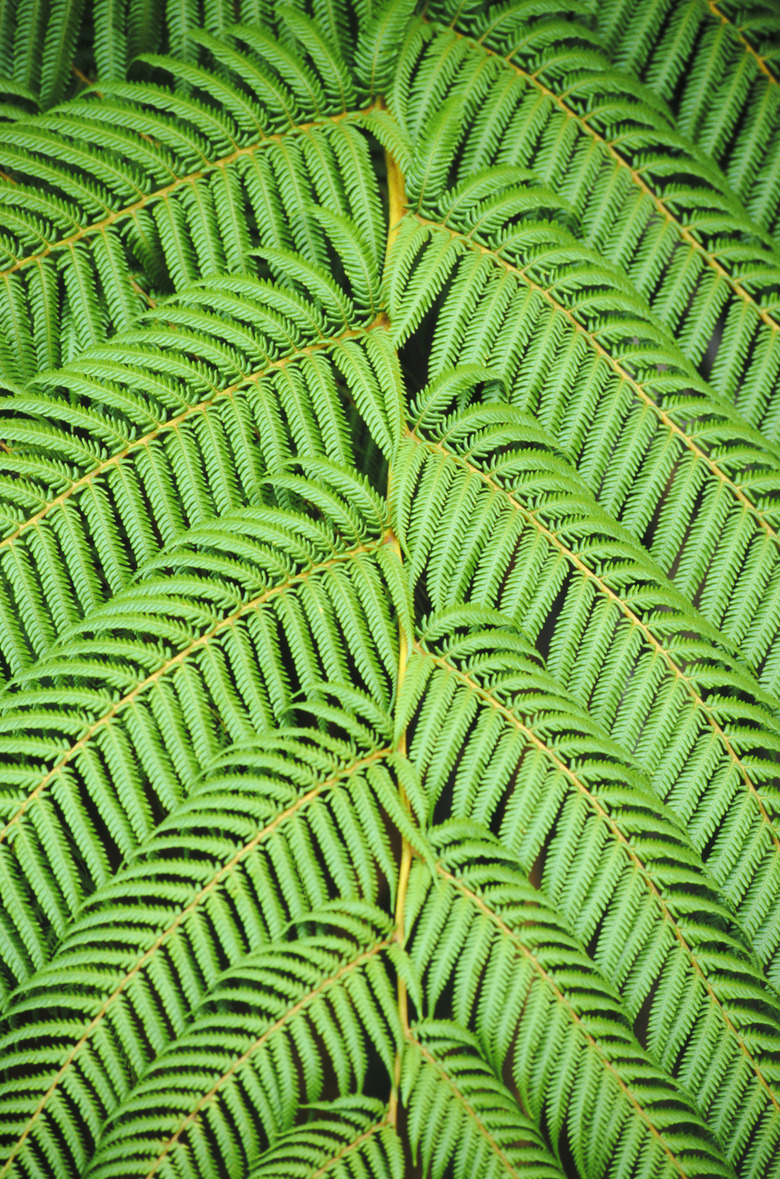Symptoms Of Boston Fern Pests
Boston ferns (Nephrolepis exaltata) are a versatile plant that can be incorporated into your landscape in a variety of ways. Hardy in U.S. Department of Agriculture plant hardiness zones 8b through 11, they tolerate light more than other fern species; are able to grow in dry conditions; and make ideal container, pedestal, specimen or group planting options. However, while they are relatively easy to care for, Boston ferns can be bothered by pests that do significant damage to the plant. Being able to spot the symptoms of the most common Boston fern pests, though, means you can deal with the problem quickly so damage is limited.
Caterpillars
Step 1
Caterpillars are one of the most common pests that affect Boston ferns, and they are usually easy to spot since the worms are clearly visible to the naked eye. Caterpillars can also leave noticeable excrement behind on the leaves of Boston ferns, which usually resembles thin black pellets. In addition, you can often spot damage that caterpillars have inflicted on the plant as they eat — it usually shows up as holes along the perimeter or in the center of the leaves.
- Boston ferns (Nephrolepis exaltata) are a versatile plant that can be incorporated into your landscape in a variety of ways.
- However, while they are relatively easy to care for, Boston ferns can be bothered by pests that do significant damage to the plant.
Mealybugs
Step 1
Mealybugs are another common pest for Boston ferns. They are small, soft insects with a white downy or cottony substance that covers their bodies. Usually, mealybugs affect the lower leaf surfaces and roots of Boston ferns, and their presence is made known by evidence of sooty mold or honeydew, a sticky, syrup-like residue, on the affected areas. In cases of severe infestation, Boston ferns may actually begin to die, with wilted, yellow or brown leaves appearing and the roots becoming loose.
Fungus Gnats
Step 1
Fungus gnats often cause problems for Boston ferns, and these insects can be difficult to spot. That's because they have small black bodies that can blend in with soil and other natural materials. They can also fly so they are able to move around quickly. Mature fungus gnats are typically found on the leaves of a Boston fern or on the soil surface surrounding it. Their larvae resemble small worms with clear bodies and black heads. Found in the soil, fungus gnat larvae actually create webs along the soil surface. Damage occurs when the larvae feed on the plant's roots, lower stem tissues and any leaves that may be in contact with the soil. Evidence of damage includes wilting and yellowing leaves. By damaging the roots, the larvae also leave Boston ferns vulnerable to disease, which can cause more serious problems for the plant.
- Mealybugs are another common pest for Boston ferns.
- In cases of severe infestation, Boston ferns may actually begin to die, with wilted, yellow or brown leaves appearing and the roots becoming loose.
Scales
Step 1
Scales are one of the more difficult pests to spot on Boston ferns, as well as other plants. They usually have small hard bodies and lack legs, so they do not move around, which makes it difficult to distinguish them from the plant that they've infested. Scales usually take up residence on the stems and leaves of Boston ferns. Like mealybugs, they excrete honeydew as they feed on the plants and black mold may develop on the leaves and stem as a result. Boston ferns infested with scales can also become stunted and start to die.
